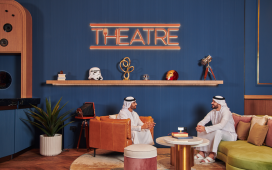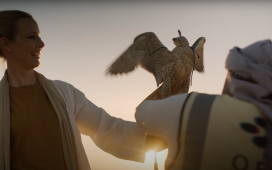
From our grandest political offices to our oldest news organisations, the erosion in public trust in our institutions rapidly accelerated in 2017. In the age of the algorithm, the past 12 months saw what happens when organisations value ‘clicks’ over all other concerns.
The US is witnessing ‘rule by Twitter’ as the President breaks down the traditional barriers to reach his public directly, but with scant regard to facts. The media doesn’t score much better: however much we feel Michael Wolff’s Fire and Fury rings true, the book is littered with basic errors and resembles something more akin to a thrilling novel than sober fact-based journalism – something we’ve also seen in breathless news reports jumping on every twist and turn of the year’s most dramatic stories.
New media, too, has spectacularly failed to live up to admittedly unrealistic expectations. YouTube was forced to act to remove disturbing, algorithm–led content that was, most worryingly, aimed at children. The Google owned ‘channel’ also saw the fall from grace of two of its biggest stars – Logan Paul (whose visit to The Dubai Mall in November prompted scenes not seen since the heyday of the rock stars of the 1970s); and online gamer PewDiePie – through their tasteless and thoughtless videos and stunts. Most notably Paul’s ill-conceived filming of a dead body in Japan’s ‘suicide forest’ triggered a furious backlash from critics and fans alike. Adding to social’s woes, Facebook is facing an existential crisis about how open to abuse it has become as a platform; Twitter is being drowned by the trolls its anonymity enables. In fact, as 2018 begins, I’m willing to make quite a remarkable claim: one of the few industries where truth, facts, honesty and evidence are positively thriving is public relations. That one of the most noteworthy casualties of 2017 wasn’t a news outlet, or a politician, but one of our own – Bell Pottinger – is a testament to that: a storied PR firm that lost its moral compass and was severely punished for it, and as much by its peers as by the public and the business community. PR is a powerful tool, and the Bell Pottinger story demonstrateswhat happens when those tools are used badly, for agency and client alike.
To kick off 2018, however, I’d like to reflect on three PR campaigns from this region that in 2017 showcased the positive power of PR in changing attitudes and behaviour, and which demonstrate how, in the coming year, being braver, bolder and more creative will reap rewards – not just for clients, but for our industry’s own standing. First up, I loved Sophie the robot being granted citizenship in Saudi Arabia. At first, and even second and third glance, this was simply a classic PR stunt, a fun story for the papers amid all the serious facts and figures of a major investment conference in Riyadh. Look a little bit deeper, though: the symbolism of Sophie being female; the light-hearted tone of the campaign; and the fact that a communications team in Saudi Arabia had the confidence to actually pull this off, knowing full well the kind of backlash and ridicule it could draw from internal and external audiences, and what we see is a truly sophisticated tactic that mirrored the social reforms Saudi announced throughout the year. From a one-off tactic to demonstrate that change is afoot, to a multi-decade, multi-billiondollar strategy to change the global perception of an entire country, the second campaign I want to highlight is the Louvre Abu Dhabi. Finally opening its doors to the public in November 2017, the museum did not disappoint. Since its announcement in 2006 the Louvre partnership has been a tricky balancing act for the emirate. Amid accusations of ‘buying culture’, the project, throughout its decade-long gestation, attracted its share of negative coverage from overseas, shining a spotlight on Abu Dhabi that the emirate may well have wished to avoid. But that’s the risk of the biggest and boldest strategies, and, like the Saudi example above, Abu Dhabi obviously felt the benefits would be worth the risks. The spectacular opening, and overwhelmingly positive buzz surrounding not just the iconic building and new public space, but the depth and breadth of the art on display, has vindicated Abu Dhabi’s bold move – and positioned the emirate as a genuine cultural capital, not just for the region but on a global stage.
The third campaign is one in which ASDA’A Burson-Marsteller was involved, but which I believe demonstrates again that core ‘truths’ and creativity are at the heart of a good campaign. Dubai Fitness Challenge for Dubai Tourism, spanning October and November in 2017, was a resounding success, encouraging nearly a million of Dubai’s residents to work on personal goals, individually and together. What I’d like to highlight about this campaign is not our involvement – proud as we are – but how this success was largely down to its patron, Sheikh Hamdan bin Mohammed bin Rashid Al Maktoum, the Crown Prince of Dubai, whose active involvement at all steps of the campaign made our job significantly easier. This is a leader who, like his father, understands not just the value of a personal brand, but that this brand cannot be fake or manufactured. To be truly effective, that brand has to be reflect genuine values, interests, concerns and skills. The Crown Prince, with his well-known love of sports and outdoor pursuits, wasn’t just a figurehead for Fitness Challenge, but its main driver. Today, ‘under the patronage of’ is no longer good enough – a truly effective campaign needs to demonstrate it has been enabled through ‘the active participation of’.
What these three case studies shows us is not just that PR works, but PR works best when it is based on a potent combination of truth, creativity, and boldness. In our age of the algorithm, which values short-term impact over long-term benefits, those companies that invested in, and believed in, credible PR will reap the rewards in 2018; those that didn’t will spend the year working very hard to rebuild their reputations and reestablish trust with their audiences.
PR will of course be crucial to this – we’re in an enviable win-win situation for a communications discipline amid the current trust deficit – and the strategies that will have the most impact will be those that can rediscover and recover those essential truths and purposes, and build on them in the boldest and most creative ways.









